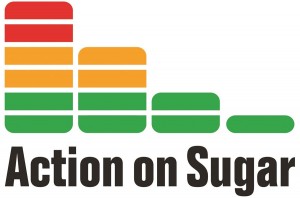New Research By Action on Sugar Reveals Cereal Manufacturers Are Using Poor Nutrition Labelling

Leading sugar and health expert group Action on Sugar, based at Queen Mary University of London, is calling for colour-coded ‘traffic light’ front of pack (FOP)1 nutrition labelling to be introduced across all food and drink products after exposing many perceived ‘healthy’ cereal brands who have failed to include the Department of Health endorsed colour-coded labelling – despite some products containing high levels of sugar which would equate to a red label.
Twenty five breakfast cereal manufacturers were surveyed2, which showed that whilst Bear, Jordans, Kellogg’s and Nestle do use FOP labelling, they do not use Department of Health’s recommended colour-coding3, making it very difficult for consumers to interpret the information and make informed decisions. A further SIX brands, including Eat Natural, Lizi’s, Nature’s Path, Paleo Foods Co., Rude Health and Dorset Cereals, contain no front of pack nutrition labelling and some products contain high levels of sugar.
 The extent of this deception has been revealed by the FoodSwitch UK app4, which provides colour-coded nutrition information for packaged food and drinks, even if there is no colour coding on the pack itself, so that users can see whether a product is high (red), medium (amber) or low (green) in total fat, saturates, sugars and salt. It also provides a list of similar, healthier alternatives and includes a new filter, SugarSwitch, which enables users to search specifically for healthier alternatives that are lower in sugar.
The extent of this deception has been revealed by the FoodSwitch UK app4, which provides colour-coded nutrition information for packaged food and drinks, even if there is no colour coding on the pack itself, so that users can see whether a product is high (red), medium (amber) or low (green) in total fat, saturates, sugars and salt. It also provides a list of similar, healthier alternatives and includes a new filter, SugarSwitch, which enables users to search specifically for healthier alternatives that are lower in sugar.
Surprisingly, breakfast cereal shoppers could save themselves a whopping 45 teaspoons of sugar per month (182g) if they had access to consistent FOP labelling allowing them to make informed decisions and switch to a lower sugar cereal.
For example, by using the colour-coded FOP labelling to switch from a bowl of Kellogg’s Crunchy Nut Honey and Nut Clusters (12g sugar per 45g serving) to a lower sugar option, such as Tesco Flakes And Clusters Cereal (6g sugar per 40g serving) every day, consumers would reduce their sugar intake by 6g/day if the serving size recommendation was followed, or a staggering 182g/month5,6,7.
Some granola cereals have no FOP labelling at all, for example, Nature’s Path Pumpkin Granola contains 8g of sugar per serving (2 tsp/ red traffic light), followed by Dorset Cereals Simply Oat Granola 7.9g per serving (2 tsp/ amber traffic light). That’s almost a third of an adult’s daily recommended sugar intake. However, some products actually have low levels of sugar, such as Lizi’s Low Sugar Granola (1.9g of sugar per serving/ green traffic light), and should proudly display their labels on the FOP!
Whilst it is encouraging that some branded companies use the government recommended colour-coded FOP labelling including: Alpen, Honey Monster, Mornflake, Quaker Oats, Scott’s and Weetabix, there are at least three different label variations used by manufacturers on their products for consumers to understand and navigate – leading to further confusion and making it difficult to compare products. In comparison, all of the nine top supermarkets have colour-coded front of pack labelling on their own-label breakfast cereals across their economy, standard and premium ranges.
Examples of products without front of pack colour-coded labelling, and what the FOP labels would look like:
Examples of alternatives with lower levels of sugar and with front of pack colour-coded labelling:
The majority of the sugars in these products is derived from ‘free sugars’, despite the Reference Intake referring to ‘total sugars’8. Free sugars includes sugars that are added to food, as well as sugars that are naturally present in honey, syrups, fruit juices and fruit concentrates, not sugars in milk products and whole fruit & vegetables.
The colour-coded FOP labelling scheme, set up in 2013 by the Department of Health and supported by various UK health charities (including Action on Sugar), has been supported by all the major supermarkets and some manufacturers, however even some of those choose to use it selectively on some, but not all, products. All companies are being urged to adopt a consistent use of colour-coded FOP labelling, across all of their food and drink products, and to also include the figure for free sugars, which is vital for consumers to make more informed, healthier choices to help reduce consumption.
Registered Nutritionist Kawther Hashem, Researcher at Action on Sugar says: “Considering that front of pack traffic light colour-coded labelling has been recommended for years and adopted by many companies, it is frustrating that big and perceived healthier brands continue to refuse to use this form of helpful labelling.
“Consistent labels allow shoppers, at a glance, to see the huge variation in salt and sugar levels in breakfast cereals. Many of these cereals, often aimed at children, would receive a red traffic light label for being high in sugars. Companies need to reduce the sugar and salt levels now by working towards the sugar targets by 2020 and salt targets by the end of 2017 – and proudly display this on their front of pack nutrition labels.”
Sarah Alderton, Nutritionist for FoodSwitch UK, says, “If companies are serious about helping their customers’ make healthier choices with lower salt, sugar and saturated fat, then, like the supermarkets and the more responsible manufacturers, they must consistently use front of pack colour-coded nutrition labelling. Until then, we have created FoodSwitch and SugarSwitch to show shoppers what’s in their food and help them find healthier similar alternatives with less sugar, so that these companies can’t hide behind poor labelling.”
Katharine Jenner, Campaign Director of Action on Sugar and FoodSwitch UK, says, “Shoppers should be seeing red, and they would be if manufacturers used the correct labels! It’s scandalous that certain food manufacturers are still refusing to be transparent when it comes to front of pack nutrition labelling. If there is no front of pack label with one brand, shoppers should assume they are hiding something – so buy another brand instead.”


































